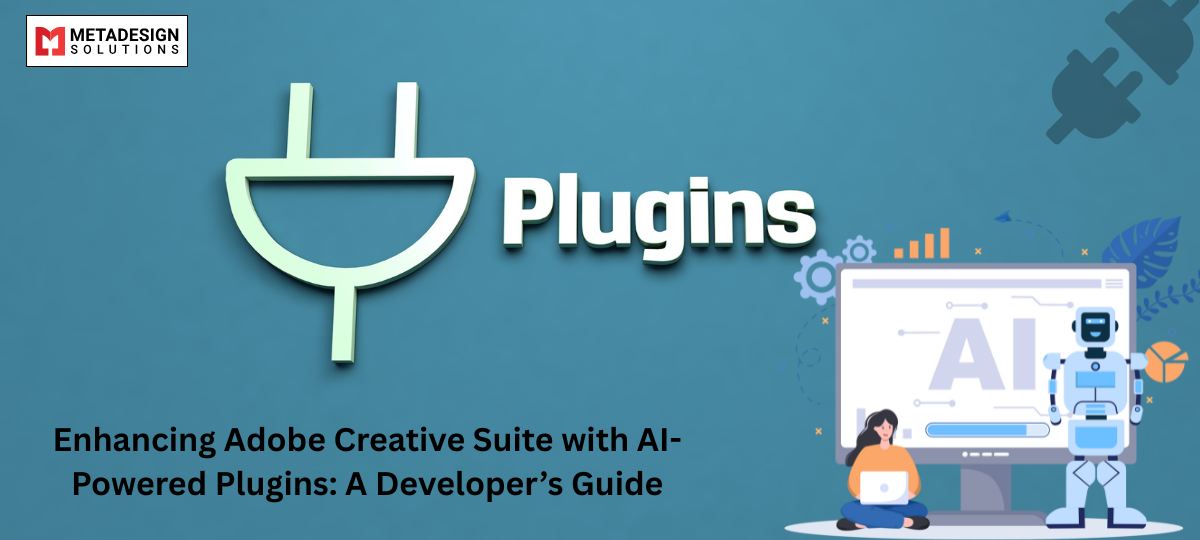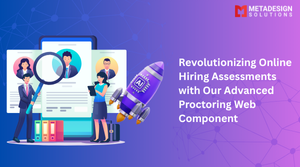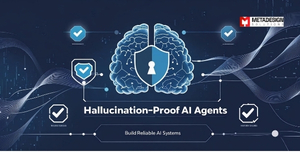Introduction to AI-Powered Adobe Plugins
Artificial Intelligence (AI) has revolutionized creative workflows by introducing advanced tools that streamline design, editing, and production processes. Adobe Creative Suite, a powerhouse of creative tools, is no exception. By leveraging AI Development Services, developers can create innovative plugins that automate repetitive tasks, enhance user creativity, and improve efficiency.
This guide will walk you through the essentials of developing AI-powered plugins for Adobe Creative Suite, from understanding the benefits of AI to the tools and techniques needed for implementation.
The Role of AI in Creative Workflows
AI plays a pivotal role in transforming creative workflows by providing features such as:
- Automated Editing: AI can remove background elements, enhance image quality, or apply filters automatically.
- Content Awareness: Tools like Adobe’s Content-Aware Fill use AI to fill gaps intelligently in images or videos.
- Predictive Design: AI suggests design elements, layouts, and templates based on the project context.
- Time-Saving Automation: Repetitive tasks, such as resizing images or exporting files, are handled efficiently.
Benefits of AI-Enhanced Plugins
1. Improved Productivity
AI reduces the time spent on repetitive tasks, allowing users to focus on high-value creative work.
2. Enhanced Creativity
AI tools provide new ways to approach design, from generating ideas to refining intricate details.
3. Consistent Results
Automated AI processes ensure consistent quality, particularly for tasks like color correction or object alignment.
4. Scalability
Plugins with AI capabilities can handle large volumes of work, making them suitable for both individual creators and enterprise users.
Tools and Technologies for Developing AI-Powered Plugins
To develop AI-powered plugins, you need a combination of Adobe-specific tools, general-purpose AI frameworks, and expert Plugin Development Services. Here’s what you’ll need:
Adobe Development Tools
- Adobe SDKs and APIs: Leverage APIs like Photoshop DOM Scripting and Illustrator APIs.
- Adobe UXP Framework: A modern extensibility platform for building high-performance plugins.
- CEP (Common Extensibility Platform): Ideal for creating cross-platform plugins using web technologies.
AI Development Tools
- TensorFlow.js: For building AI models in JavaScript.
- PyTorch: A Python-based framework for deep learning.
- Hugging Face: Useful for implementing pre-trained AI models.
- Google Cloud AI or AWS AI Services: For hosting and processing complex AI models.
Web Development Tools
- HTML, CSS, and JavaScript: Essential for designing plugin interfaces.
- Node.js: For backend scripting and server-side tasks.
- React or Vue.js: To build dynamic and responsive user interfaces.
Building AI Models for Adobe Plugins
Step 1: Define the Use Case
Identify the specific functionality your AI-powered plugin will offer. Examples include:
- Object detection for image editing.
- Automated video transcription in Premiere Pro.
- Intelligent layout suggestions for InDesign.
Step 2: Data Collection
Gather and preprocess the data required to train your AI model. Ensure the dataset is diverse and labeled accurately.
Step 3: Model Selection
Choose a machine learning model suited for the task. For example:
- Convolutional Neural Networks (CNNs) for image-based tasks.
- Recurrent Neural Networks (RNNs) for text or time-series data.
- Transformer models for advanced natural language processing.
Step 4: Training and Evaluation
Train your model using tools like TensorFlow or PyTorch. Validate its performance by testing it on unseen data.
Step-by-Step Guide to Plugin Development
Defining the AI Feature
Start by clearly defining the problem your plugin will solve. For example, an AI plugin for Photoshop might automate the process of removing unwanted objects from an image.
Training the AI Model
Once the feature is defined:
- Gather relevant datasets.
- Train the model using frameworks like TensorFlow or PyTorch.
- Optimize the model for performance, considering the hardware capabilities of target users.
Integrating AI into Adobe Plugins
Integrating AI into plugins involves:
- Setting Up the Development Environment
- Install Adobe UXP Developer Tool.
- Set up a new UXP project.
- Creating the Plugin Interface
- Design an intuitive UI using HTML, CSS, and JavaScript.
- Integrating AI Features
- Use JavaScript APIs to connect the trained AI model to the plugin.
- Example code snippet for AI-based image enhancement in Photoshop:
- Setting Up the Development Environment
const app = require("photoshop");
async function enhanceImage() {
const doc = app.activeDocument;
const layer = doc.activeLayers[0];
const result = await callAIEnhancementAPI(layer.pixelData);
layer.replaceContent(result);
}
Supercharge Your Adobe Workflow with AI
Looking to integrate AI into your Adobe Creative Suite? Schedule a consultation with MDS to develop custom AI-powered plugins tailored to your needs.
4. document.getElementById(“enhanceButton”).onclick = enhanceImage;
5. Testing and Debugging
- Use the UXP Developer Tool to test and debug the plugin within Adobe applications.
Best Practices for Developing AI-Powered Plugins
- Focus on User Experience Design plugins that are intuitive and easy to use, even for non-technical users.
- Optimize Performance Ensure the AI processes run efficiently, especially for resource-intensive tasks like image processing.
- Ensure Cross-Platform Compatibility Test plugins across different operating systems and Adobe versions.
- Secure User Data Implement robust data protection measures to ensure user privacy and compliance with regulations.
Challenges and Solutions in AI Plugin Development
Challenge 1: Resource Constraints
AI processes can be resource-intensive. Use cloud services for computation-heavy tasks.
Challenge 2: Model Accuracy
AI models may produce inaccurate results if not trained on diverse datasets. Continuously update your model with new data.
Challenge 3: Integration Complexity
Integrating AI into Adobe plugins can be complex. Utilize Adobe’s comprehensive documentation and developer forums for support.
Future Trends in AI-Powered Plugins
- Real-Time AI Features With advancements in hardware, real-time AI capabilities like live object tracking and editing will become mainstream.
- Collaborative AI Tools Plugins that facilitate teamwork by suggesting collaborative design elements.
- Context-Aware AI Future plugins may analyze the context of a project to provide intelligent suggestions and automation.
Conclusion
AI-powered plugins for Adobe Creative Suite represent a paradigm shift in how creative professionals approach their work. By combining AI with Adobe’s extensibility features, developers can create tools that streamline workflows, enhance creativity, and improve productivity.
Curious about the nuances of AI, ML, GenAI, and Deep Learning? Check out our insights on the differences and how they can transform creative technology.
At MetaDesign Solutions, we specialize in developing cutting-edge plugins tailored to your needs. Whether you’re looking to incorporate AI or create cross-platform solutions, our expert team is here to help. Contact us at sales@metadesignsolutions.com to bring your vision to life.
Related Keyphrases:
#AdobeSuite #AdobeIllustrator #AdobePhotoshop #AdobeXD #CreativeCloud #AdobeAfterEffects #AdobePremierePro #AdobeInDesign #AdobeAnimate #AdobePlugins #AdobeStock #CreativeWorkflow #DigitalDesign #GraphicDesignTools #MotionGraphics #VideoEditing #ContentCreation #CreativeEditing #CreativeSoftwareTools #AdobeCreativeCloud #AdobeCreativeSuite #AIPlugins #CreativeTools #AdobeDevelopment #AIIntegration #DesignAutomation #CreativeSoftware #AIDrivenDesign #DeveloperGuide #UXDesignTools #ArtificialIntelligence #PluginDevelopment #GraphicDesignAI #DigitalCreativity #AutomationInDesign #AIForCreatives #DesignTechnology #CreativeInnovation #AIEnhancedDesign #DesignWorkflow



